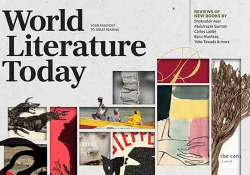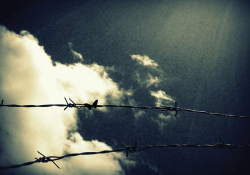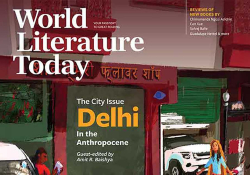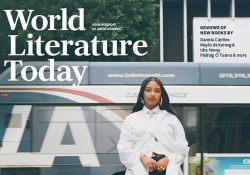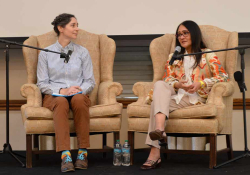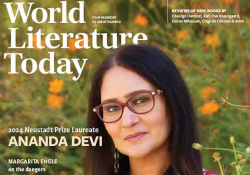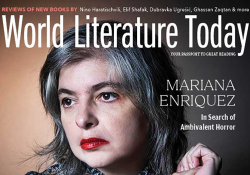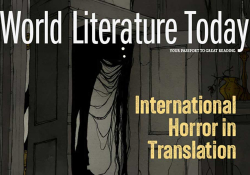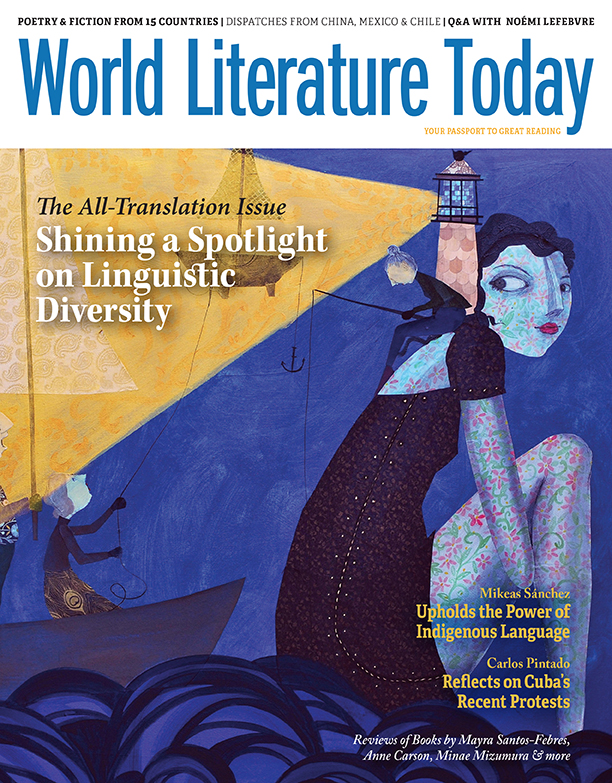Editor’s Note
Say eros in translation, say I want to be translated by you. – Sawako Nakayasu, Say Translation Is Art
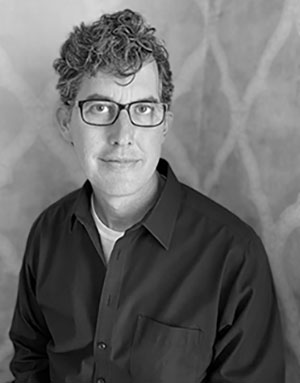 ARABIC, CHINESE, FRENCH, Hebrew, Ikyaushi, Italian, Japanese, Quechua, Russian, Spanish, Swedish, Turkish. These are among the many source languages featured in the current issue of WLT, which—for the first time in its ninety-five-year history—is entirely devoted to translation: every contributed byline to the issue represents a translation into English, and the entirety of the book review section, moreover, is dedicated to translated books. What does the world literary landscape look like in 2021? In order to answer that question as broadly as possible, the WLT editorial team wanted to delve into the extraordinary range of literature being produced in languages other than English. In some cases, one language serves as a portmanteau for a diversity of voices: with Spanish, in particular, the current issue spotlights writers from Chile, Cuba, Mexico, Spain, and Venezuela as well as poets from Bolivia and Peru who self-translate into Spanish. In the review section, Anne Carson’s recent “translation” of The Trojan Women defies the boundaries of what that term contains: imitation, transposition, rewriting, belle infidèle?
ARABIC, CHINESE, FRENCH, Hebrew, Ikyaushi, Italian, Japanese, Quechua, Russian, Spanish, Swedish, Turkish. These are among the many source languages featured in the current issue of WLT, which—for the first time in its ninety-five-year history—is entirely devoted to translation: every contributed byline to the issue represents a translation into English, and the entirety of the book review section, moreover, is dedicated to translated books. What does the world literary landscape look like in 2021? In order to answer that question as broadly as possible, the WLT editorial team wanted to delve into the extraordinary range of literature being produced in languages other than English. In some cases, one language serves as a portmanteau for a diversity of voices: with Spanish, in particular, the current issue spotlights writers from Chile, Cuba, Mexico, Spain, and Venezuela as well as poets from Bolivia and Peru who self-translate into Spanish. In the review section, Anne Carson’s recent “translation” of The Trojan Women defies the boundaries of what that term contains: imitation, transposition, rewriting, belle infidèle?
Of course, bracketing off the world of English-language literature (i.e., originally written in English) skews the picture. According to the aptly named Babbel magazine, some 1.35 billion of the world’s inhabitants speak English, of which 360 million speak English as a first language. Yet by reversing the polarity—indeed, the hegemony—of English as source language and relegating it to “target” status, a much richer tapestry of world literature emerges. Have you read something from Arabic, Ikyaushi, or Quechua lately? Or from Hebrew, Swedish, or Turkish, for that matter? If not, the current issue of WLT has done the work of bridging the cultural and linguistic divide for you. Against the grain of Thomas Friedman’s “flat” world, literature written in languages other than English disrupts the metanarrative of neoliberal globalization and cultural homogeneity.
Translators themselves are the often-unsung heroes of that countersweeping effort. Together with the editors and publishers who embrace the art and craft of translation—and wager their livelihoods on the fraught economics of championing translated literature—translators are often overlooked as the “beggars at the church door” leading into the cathedral of belles lettres, in Valery Larbaud’s memorable metaphor. In her 2020 pamphlet-manifesto Say Translation Is Art, published by Ugly Duckling Presse, Sawako Nakayasu makes a case that, rather than the mendicants of the literary world, translators actually infuse its economy with much-needed “foreign” cultural capital. Nakayasu also refutes the falsifications of every binarism. Instead of penury, she celebrates translation as eros; translation as breaking, as feral wildness; translation as “extension of life,” as breath, as mouthful, as “body full.” At its most fundamental level, translation rebuilds the Tower of Babel, but the sweat and grit of that reconstruction happen at the level of intersubjective encounter. “Say I you you me,” Nakayasu writes, “I risk you me, say this and translate me.”
So I ask you, reader: Have you bought a translated book lately? Turn to page 72, and I’ll give you thirty-nine reasons to reply, No, but I will now. And the next time you walk into that high church of literature, take a translator home with you—and offer them something to eat.
